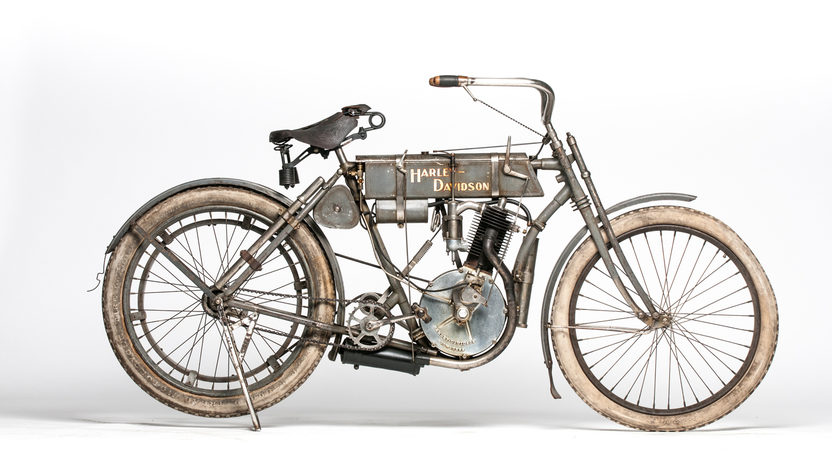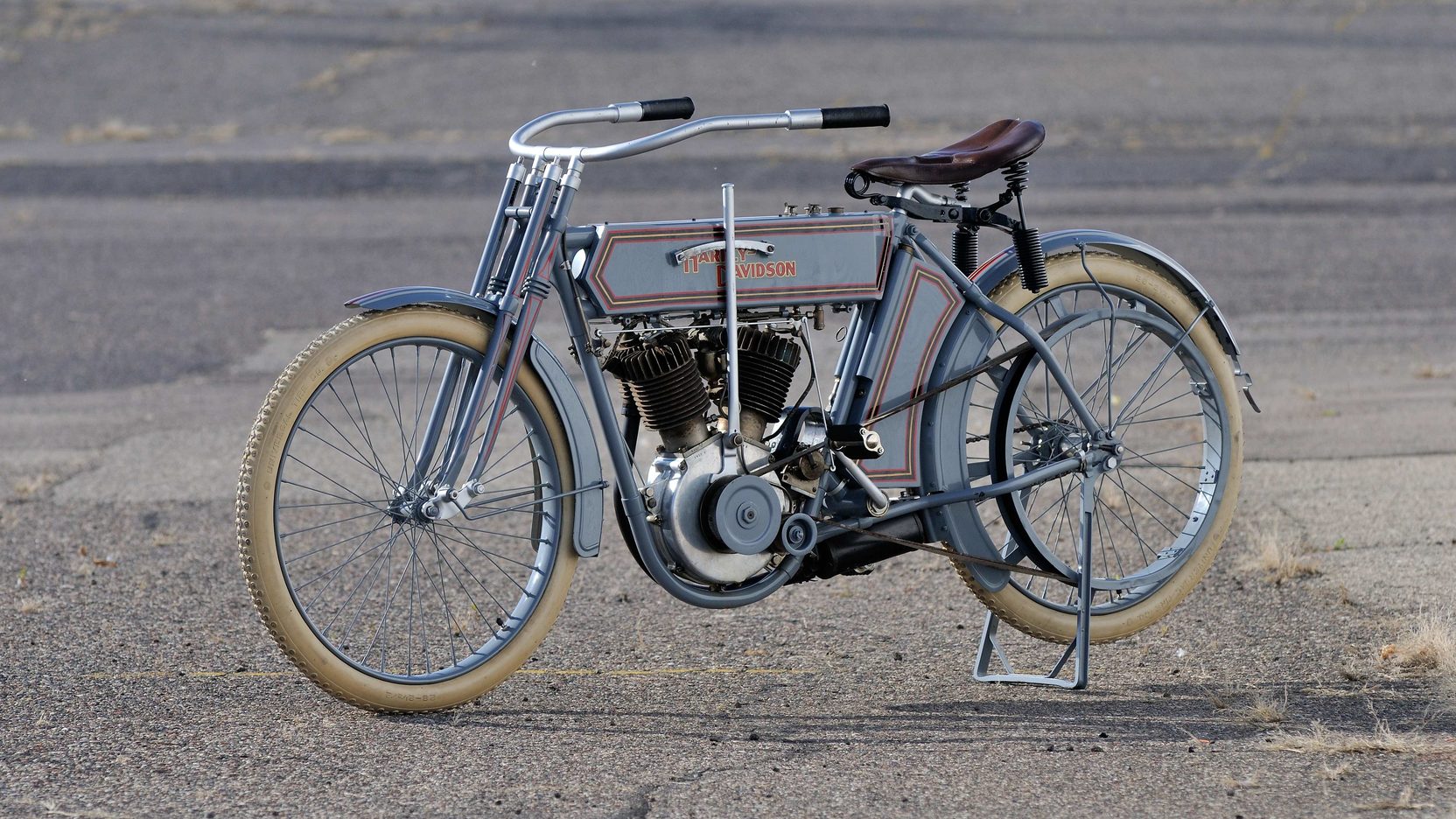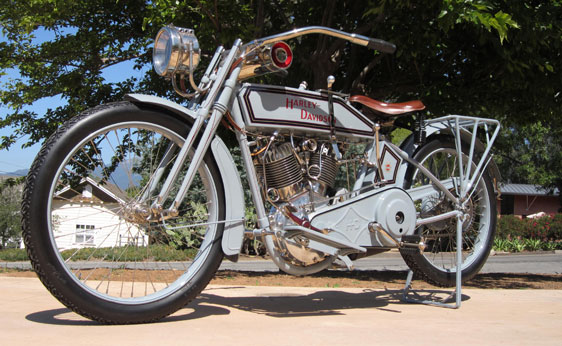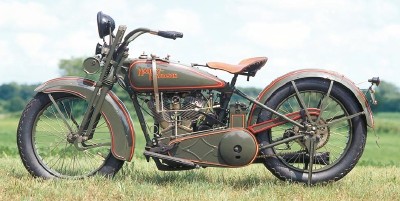Today the Harley-Davidson brand, at least to many American bikers, is a symbol of legitimacy. They’re made right here in the United States, always have been. Stock bikes are a no-no if riders want street cred. They often commit new bikes to countless modifications before the bike comes home.
Anyone who rides will tell you, that’s where Harley-Davidson really cleans up: the aftermarket. Part of the Harley-Davidson signature is their rumbling exhausts. Riders swear by the safety afforded louder bikes when on the road, but we know fans just like the growl. (Me too.)
Throaty exhausts are not where the brand started out. They weren’t very flashy bikes either. For the first couple of decades, the color tones were muted, just like the exhausts. Still, there is a timeless beauty to every model. The following bikes capture some of the key changes in the early years of the brand.
1907 Strap Tank
Note the single cylinder on this bike. The Davidson brother and William Harley had been tinkering with prototype bikes since 1901, but in 1905 they cranked out 50 of these bad boys.
The Strap Tank took its name from the metal straps holding the tank to the frame. By 1907 they produced 15o strap bikes.
That same year, they built and displayed a prototype for a bike with a v-twin engine at the Chicago Automobile Show. Things were about to get crazy.
1909 V-Twin
The first V-Twins sold by Harley-Davidson were not their best work. They were problematic so they stopped selling them. Some Harley-Davidson historians lobby that they never actually sold these models.
In 1910 they went back to single cylinder engines, secretly hammering out the engineering of the v-twin. It was 1911 before they released one again, but this time they nailed it.
1911 Model 7D
“The Silent Gray Fellow,” they called it. With an advanced muffler, the 7D was a quiet bike compared to the other motorized bikes on the road.
It not only had the v-twin, they powered the back wheel with the same leather belt drive they perfected on 1911 single cylinder models. One adjusted the tension of that belt by toggling a shaft on the left side of the bike, something like a manual shifter in a car.
At the time, you could buy one of these for about $300.
1915 Model 11F
The 11F was the first Harley-Davidson to offer electrical lighting, a standard after that year.
You can also see that they’d cleaned up that shifter on the left side of the bike. That was per the new three-speed gearbox. They’d designed the new clutch and gearbox to take a beating.
This bike also introduced an upgrade to the previous oil meter, an automated pump. The 1915s were more powerful than the previous year by 37%, due to bigger and better-angled inlet valves.
You could still get into one of these for about $300 a the time.
1918 Model 18-J
In 1918 we were about to enter the Great War. That was about the same time (1917) Harley Davidson switched from the gray they’d used for years to drab green.
Apparently, they liked the color as they kept it for ten years after this. It made sense too. They could easy to crank out bikes that they could sell as civilian bikes or military bikes.
Note the bumper seat on the back of this model. Imagine trying to hang on riding in the back.
1925 Model JD
The 1925 models were all about contours. You can start to see the direction the tanks will go for the next 90 years, at least for cruising bikes.
The seat of the 1925 bike also offered a new contour, holding the rider into the seat better.
They moved the shifter a little forward. The headlamp and horn they’d swapped after the 1918 models.
Drab green was still the fashion in 1925.
With over 110 years of engineering in their customized rear view mirrors, I still like the older bikes the best, but I’d never turn away from any Harley-Davidson. I might even put my hand over my heart and recite the pledge of allegiance.






